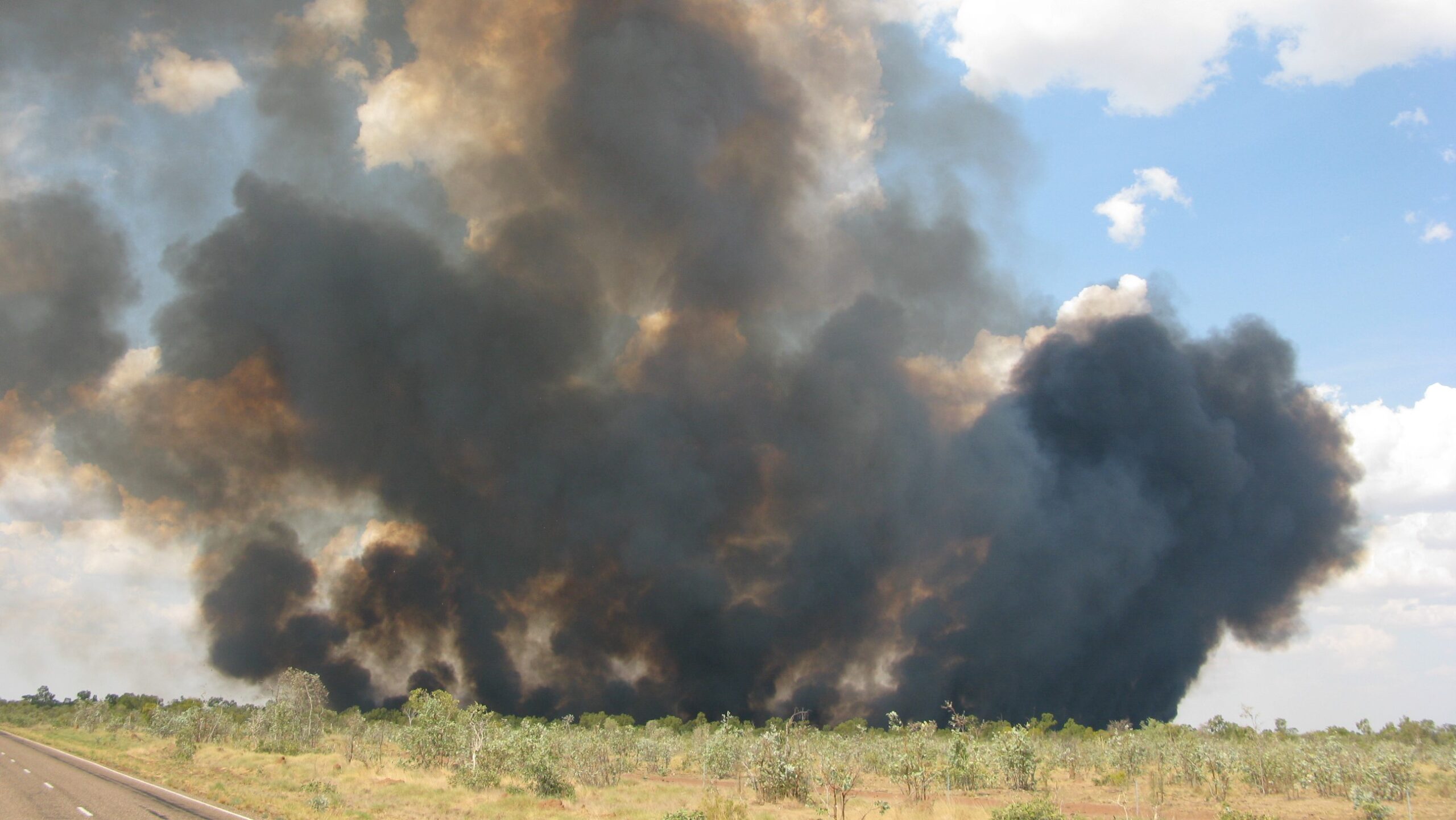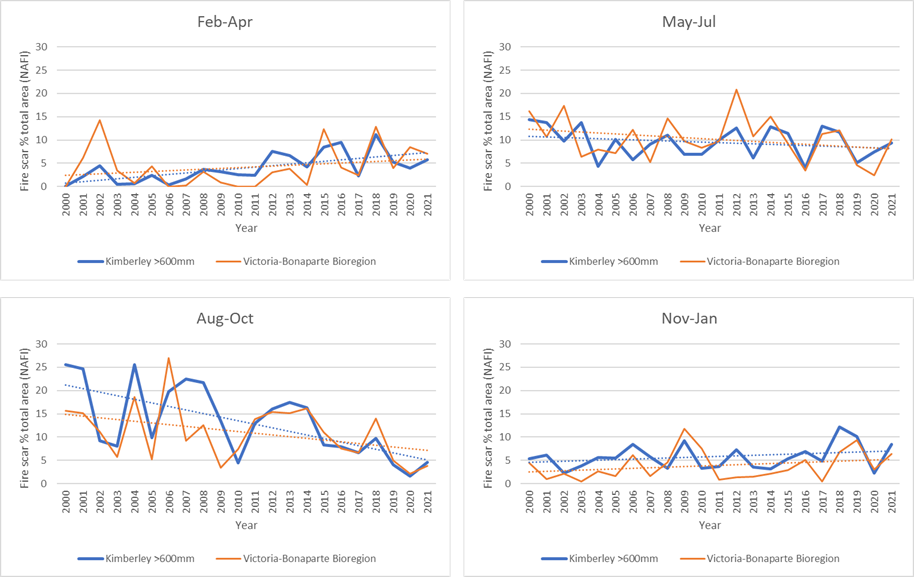Western Australia’s wildfire outlook 2023

Written by Kath Ryan, Development Officer, Rangelands Team, Department of Primary Industries and Regional Development, WA.
This year is shaping up to be a bumper year for pasture growth in the Kimberley region, so it is likely that the risk of wildfires will be high as the country dries out. Fire is integral to northern ecosystems and the Department of Primary Industries and Regional Development (DPIRD) supports land managers working together to reduce risks to people, the base resource, their livestock and livelihoods.
North Australia Fire Information (NAFI) fire scar data show a decreasing trend in the area burnt during late dry season wildfires across the Kimberley over the last 22 years.
Rangelands staff investigated using the NAFI reports to see if there was a discernible trend (increase or decrease) in late dry season wildfires that would show up in the fire scar data for the Kimberley, in preparation for the East Kimberley fire forum held in late 2022. Reports were investigated for the Victoria-Bonaparte Bioregion and a polygon drawn over the approximate area of the Kimberley with an average annual rainfall of above 600mm. NAFI fire scar data were plotted for the Victoria-Bonaparte Bioregion and the broader area for groups of months relevant to the Kimberley climate.

There is a decreasing trend in the percentage area of fire scars for August to October over both the bioregion and the broader Kimberley: consider this evidence against increased rainfall and therefore higher potential fuel load over the same region. This trend shows that efforts to coordinate burning and reduce the incidence of large-scale wildfires late in the year are having a significant impact.
DPIRD’s Fire in the WA rangelands webpage has general principles that apply everywhere, and linked to this page are others for fire management of pastures in the Kimberley, Pilbara, Arid Zone and one page dedicated to management of spinifex pastures and fire.
There’s also a pastoral remote sensing reporting tool that includes greenness, biomass and bare ground products by pastoral station. These products can be used to help plan and prepare for the fire season ahead.
Managed fire can reduce the risk of wildfires, benefit pasture productivity, be used to influence grazing pressure, and contribute positively to biodiversity values in fire-prone ecosystems.
Read more
Fire management guidelines for Kimberley pastoral lands →
Fire management guidelines for southern shrublands and Pilbara rangelands →
Using fire as a management tool in the grazing lands →